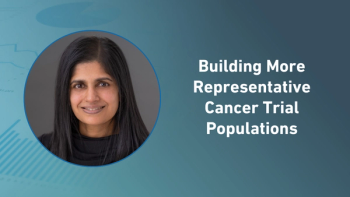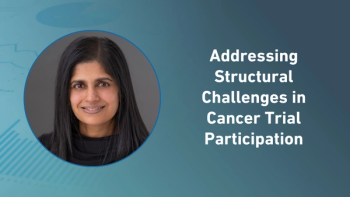
Improving Trial Design with LLMs
In part 2 of this video interview, Rama Kondru, PhD, CEO of Veridix AI highlights areas that large language models can be used in clinical trials including patient recruitment and retention.
ACT: Specifically, how can these large language models (LLMs) improve trial design, recruitment, and analysis?
Kondru: I want us to step back and look at the entire paradigm of clinical trials, just from a protocol synopsis to building the study, study startup, what we call study conduct, or mid-study changes in a clinical trial—text to text, text to figures, text to listings, text to images. These sort of transformations are all over the place in all aspects of a clinical trial Aand if you put all of them together, there is really a comprehensive ability for LLMs to impact the timelines across the clinical trial, and that's what I'm super excited about. One of the things that you talked about, improving trial design, is really selecting, patient selection, or patient identification recruitment, while understanding the patient burden on a clinical trial. That's one concept which we are aggressively looking at in terms of how to improve this participant, patient burden.
The second is site selection. Which sites do we select? As we all know there is a lot of congestion at key sites for certain clinical trials, we want to decrease the site burden, but also understand, how do you make sure that the right sites are selected for each of these clinical trials? That's just the tip of the iceberg in areas where you could actually see LLMs being impactful across the entire value stream of a clinical trial.
Some areas that I'm personally working with the team: patient recruitment and retention, really trial matching, to reduce dropouts. Again, one of the biggest issues is patients sign up for clinical trials, but they drop out. How do you make sure the signed patient stays on the clinical trial, what information can we provide them? Personalized reminders driven by artificial intelligence and LLMs, providing the right content to the right patient at the right time, support through chat bots and mobile apps. There's a lot that we can do to reduce dropouts. In terms of on the other side of the equation, which is patient recruitment. Can we actually know about these patients through social media? As you can imagine, a lot of patients and participants are actually participating in the social media events. There is really a lot of work that we are doing within this protocol, trial design, but truly understanding the site burden and the patient burden.
Newsletter
Stay current in clinical research with Applied Clinical Trials, providing expert insights, regulatory updates, and practical strategies for successful clinical trial design and execution.




